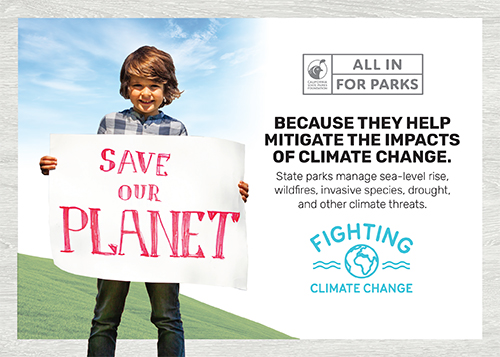Climate change poses an existential threat to California’s natural resources, habitats and wildlife. The evidence is clear, climate change will have real and significant impacts to California’s land and on all Californians.
- Climate change threatens to push 82% of California’s native fish species and countless other iconic species to extinction.
- Climate change also poses significant threats to California’s economy. For example, yields of California-grown avocados are projected to decline by 40 percent and California-grown almonds, table grapes, oranges and walnuts by 20 percent by 2050 under business-as-usual scenarios.
- The wildfire season is becoming longer and more intense each year due to hotter temperatures and wide scale tree death resulting from prolonged drought. Between 2010-2017 an estimated 129 million trees died, leaving behind massive amounts of highly combustible fuel. This phenomenon has led to the worst fires on record. Over the 13 months starting in October of 2017 the state endured four massive fires that caused 118 deaths, burned 700,000 acres, and destroyed 27,000 properties. In 2017 multiple state parks sustained fire damage and then again in 2018 more state parkland was destroyed by fires.
- In California, frequent coastal flooding exacerbated by sea level rise is expected to threaten nearly half a million people, $100 billion in property, and 3,500 miles of roads within the next 80 years. The number of hazardous sites, like wastewater plants, which are susceptible to 100-year flood events is expected to increase by nearly 2.5 times over a similar period, drastically increasing the risk of pollutant disasters if adaptation measures are not taken.
- Droughts are an expected feature of California’s arid climate, but the four-year period between fall 2011 and fall 2015, which correlated with the hottest two years on record in 2014 and 2015, was the driest since record keeping began in 1895. The winter of 2017 provided only a brief respite before historic rainfall lows again in the winter of 2018.
We must meet the urgent challenge of climate change head on. Our state parks play a critical role in addressing this crisis.
- California’s state parks help to protect important habitats and conserve lands from development, supporting the sequestration of climate-causing pollutions.
- California’s state parks employ fire managers and scientists who manage controlled burns that reduce fuel buildup and increase resilience for native species and adjacent communities. As climate change increases the intensity and frequency of significant wildfires, proper land management practices are key.
- Forests and natural lands protected by California’s state parks sequester climate-warming pollution:
- Old-growth redwood forests have been found to sequester more carbon than any other type of forest in the world.
- California state parks help protect more than 150,000 acres of redwood forest within 37 different parks.
- California’s urban state parks can help mitigate local impacts of climate change, sequester carbon, and improve quality of life of city dwellers.
- As climate change intensifies heat waves, state parks located in urban environments help to reduce the “heat island effect.” Urban green spaces have been proven to significantly lower the temperature, locally and in the surrounding area.
- Temperatures at night in a park have been shown to be 13 degrees cooler than surrounding areas.
- As climate change intensifies heat waves, state parks located in urban environments help to reduce the “heat island effect.” Urban green spaces have been proven to significantly lower the temperature, locally and in the surrounding area.
- Trees and vegetation in urban parks help to reduce air pollution in the surrounding community.
- Parks have been shown to remove 80 pounds of pollution for every acre of tree cover.
- Urban parks also directly help to mitigate climate change through the sequestration of carbon dioxide.
- Annually, urban parks in the U.S. are estimated to remove 1.2 tons of carbon per acre of tree cover from the atmosphere.
- Soil in urban parks in the U.S. is estimated to store 32 tons of carbon per acre.
- California’s state parks preserve important habitat for native plants and animals that are experiencing increased duress through the impacts of climate change.
- California state parks has supported millions of dollars through the Habitat Conservation Fund to support projects supporting rare and endangered species, acquire and develop wildlife corridors and support access. Projects include:
- In 2015, the California Department of Parks and Recreation awarded $140,000 to support the restoration of approximately 0.5 acres of wetland habitat adjacent to the Grace Hudson Museum.
- In 2015, the California Department of Parks and Recreation announced $200,000 to help acquire approximately 51 acres of endangered species habitat in the Peutz Valley/Chocolate Summit area.
BY THE NUMBERS
80 pounds
of pollution for every acre of tree cover are remove in parks.
